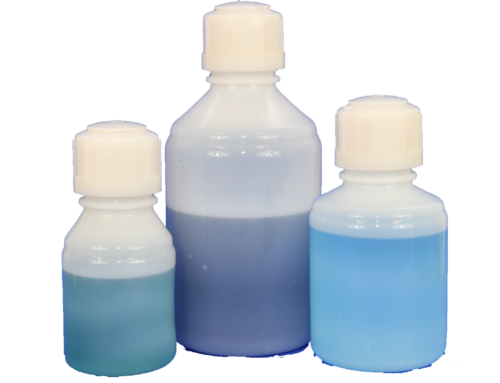 What are the Key Differences Between PTFE and PFA, Anyway?
What are the Key Differences Between PTFE and PFA, Anyway?
When you think about fluoropolymer early adopters, who springs to mind?
If you answered, “the semiconductor industry,” you’d be spot-on.
The semiconductor industry was one of the first to widely use fluoropolymers. Why? For starters, fluoropolymers’ inertness, resistance to high concentration mineral acids, wide temperature working range and low trace metals content made them uniquely suited to the semiconductor manufacturing process.
PTFE (Polytetrafluoroethylene) was the first fluoropolymer to be adopted by the semiconductor industry, followed by PFA (Perfluoroalkoxy alkane). A key difference between the two is that PFA is melt processable – meaning that it can be heated until molten and then shaped through injection molding or blow molding. PTFE, on the other hand, must be machined or compression molded.
PFA differs from PTFE in another important way: it’s cleaner. By “clean,” we’re talking about trace metals – and PFA components can be manufactured with lower trace metals content than PTFE. There are two reasons for this:
- Manufacturing processes. Injection and blow molding used for PFA are much cleaner processes than machining and compression molding.
- PFA resin is available in high purity (ultra-low trace metals) grades. In many cases, you can’t obtain a specific “grade” of PTFE.
So, it’s no coincidence that for the most critical applications, PFA is used instead of PTFE. Here are a couple quick examples:
- The sample introduction systems of ICP-MS instruments used to measure low ppt trace metals in process chemicals and silicon wafer VPD (vapor phase decomposition) analysis are manufactured from PFA – not PTFE.
- Bottles used to transport high purity acid (10 ppt grade) are also manufactured from PFA – not PTFE.
To Machine, or to Mold? That is the Question…
PTFE is still widely used in semiconductor manufacturing – typically for process vessels, fittings, connectors, transport containers and in fluid handling. Though, in many cases, these are legacy applications.
Machining parts from PTFE helped manufacturers avoid the (sometimes steep) initial investment in creating tooling for molded PFA. But machining complex parts from PTFE is an expensive (and time-consuming) process, particularly if you’re moving from smaller to larger part quantities. In that case, switching to molded PFA parts is the far more efficient and cost-effective route.
For example, you might have a machined PTFE part that costs $300 to produce, but only $50 when that same part is created from molded PFA. Yes, it’s true that moving to PFA molding comes with a higher initial tooling cost, but if demand and volumes are high, it’s possible to recoup your investment quickly.
Also, intricate and complicated parts or product features can be molded, so expensive CNC machining doesn’t always have to be part of your production process. Perhaps most importantly, a part molded from high purity PFA will be cleaner than the PTFE equivalent.
For fluid handling applications, PFA assemblies can be fabricated by non-contact welding which avoids contamination of the original molded parts.
Want to learn even more? Check out our full slate of custom fluoropolymer injection molding and blow molding solutions.
Also – stay tuned for our next blog entry as we dive into the story of how we helped one of our semiconductor industry customers make the jump from machined PTFE to molded PFA in their manufacturing process.



